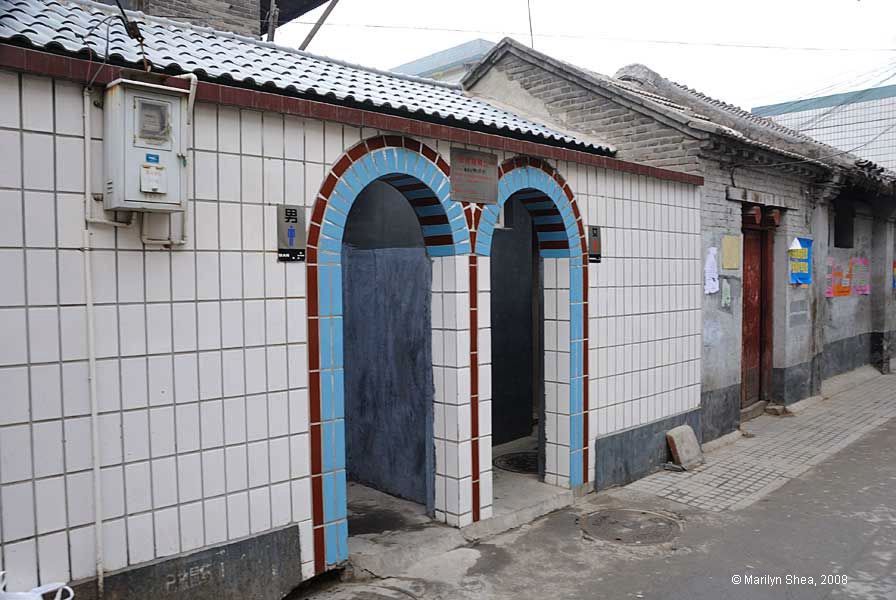 |
| In the late 1990s the hutongs, both here and on the north side of the Forbidden City, received new bathrooms. In some parts of the northern hutongs they actually put in sewers and modern water service throughout to provide residences with individual service. Here, the bathrooms are communal. There are showers and toilets. The individual residences have water service, but it is makeshift.
Below is what we call honey dipping; a nice euphemism. Up until the late 1990s, night soil carts were a common sight in Beijing. They may still be a necessary service in some of the outlying areas, especially where temporary immigrant housing has been thrown up in vacant lots. There remain many areas that need modern sewers and storm drains. It is an expensive proposition to tear up a street in a heavily built up area. I know. The area where I stay in Chaoyang district already had high rise apartments and fairly heavy commercial development before they started tearing up the streets to lay down sewers and storm drains. Before that, the buildings were dependent on septic tanks. It took five years to complete the project in my district. The road was repeatedly torn up and left a muddy mess in between. Part of the problem was the scope of the project and the need to connect feeder lines, but the major problem was the lack of money. When they ran out of money, they filled in the ditches and waited. Finally, it was finished in just a two month dig. The district got help from the city of Beijing. |
 |
http://hua.umf.maine.edu/China/HistoricBeijing/Qianmen/index.html
Last
update: August 2009
© Marilyn Shea, 2009